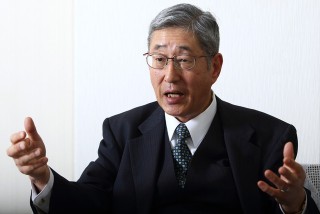Loading
Search
▼ Japan Pension Fund Head Calls for $389 Billion Stock Revamp
- Category:Other

BUSINESS WEEK
Japan’s Government Pension Investment Fund is considering whether to overhaul its $389 billion of stock investments by loosening rules that restrict managers to domestic or international equities.
A month after the $1.1 trillion pool unveiled plans to more than double local and foreign share targets so that each makes up 25 percent of assets, Takahiro Mitani, its president, said separating the world into Japan and everywhere else may not be the best approach. GPIF should consider letting some of its managers invest both at home and abroad, he said.
“More funds are investing without discriminating between domestic and foreign, and I think that’s worth considering,” Mitani, 65, said in an interview in Tokyo on Dec. 3. “If choosing between Toyota and Volkswagen, instead of being limited to just Toyota and Nissan, raises investment performance and efficiency, it’s an option we mustn’t rule out.”
The California Public Employeesâ Retirement System, the biggest U.S. public pension, makes no distinction between local and foreign holdings. Calpers, which oversees about $295 billion, has a 51 percent target for public equities, according to its website. GPIF’s stock investments were parceled out to managers in 45 different pieces as of March 31, according to the fund’s annual report.
Shares Rally
The Topix index rallied 8 percent through yesterday since GPIF announced the investment strategy changes on Oct. 31. The Bank of Japan unexpectedly expanded its bond buying to 80 trillion yen ($667 billion) a year on the same day, as it targets annual inflation of 2 percent.
The extra purchases helped drive yields on benchmark 10-year notes down by 3.5 basis points to 0.435 percent yesterday, after touching a more than 1 1/2-year low at the end of November.
The Topix slipped 0.2 percent as of 10:44 a.m. local time today, while the yen fell 0.1 percent to 119.86 per dollar.
Changing Systems
GPIF would have to revise its systems to allow one manager to invest across Japanese and non-domestic shares, Mitani said. Alternatively, it could create a new global stock class on top of the existing ones, he said. The fund is due to review foreign equity managers in about 18 months, according to Mitani.
Regardless of how it deploys managers, the Japanese fund is looking to put more money in foreign assets at a time when its home currency is slumping. The yen weakened past 120 per dollar for the first time in seven years yesterday.
Mitani said the pace of the currency’s decline caught him off-guard, and the fund will watch foreign exchange moves carefully when shifting its holdings abroad.
“I’m surprised how rapidly the yen has depreciated,” Mitani said. “I doubt it’ll continue in a straight line, but we have to be careful not to buy foreign assets when they’re expensive. We’ll take care not to accelerate a weakening yen and take our time” shifting toward GPIF’s new foreign asset targets, he said.
Currency Impact
While the weaker yen has helped some parts of the economy, the currency’s 31 percent drop over the past two years has also started to have a negative impact on some areas, he said.
“Until now, we had been troubled by a strong yen and were welcoming of a weaker currency,” Mitani said. “That situation is changing. But at these levels, it’s still OK. Luckily oil prices fell too, so that has offset the weaker yen.”
GPIF’s new portfolio is split into four asset classes: the 25 percent targets for Japanese and foreign stocks, up from 12 percent each; the 35 percent allocation to domestic bonds and 15 percent for foreign debt, an increase from 11 percent. The fund had 18 percent of its holdings invested in Japanese stocks at the end of September.
The GPIF revamp was carried out to reflect changes in Japan’s economy as it exits deflation, Mitani said at the time. GPIF is under pressure to cover payouts as more Japanese baby boomers born in the wake of World War II turn 65 years old and become eligible for pensions.
Stock Holdings
Seki Obata, a former member of the investment committee, said in May the fund owns too many local shares for the size of the market. Obata called for Japanese equities to make up 10 percent of the portfolio at most, citing a risk in not diversifying.
Japan’s current stock-market capitalization is about 6.9 percent of the world’s $65.3 trillion market value, according to data compiled by Bloomberg. The country was overtaken by China as the world’s second-largest stock market on Nov. 27. Japan’s market capitalization was $4.5 trillion on Dec. 3, compared with $4.7 trillion for China. The U.S., the biggest, has a value of $24.4 trillion.
“Until now, we’ve kept Japanese and overseas stocks separate,” Mitani said. “That’s how we’ve run the fund. But now we’re thinking of starting a more global style of investment. We haven’t got there yet. But we want to do so eventually.”
To contact the reporters on this story: Anna Kitanaka in Tokyo at akitanaka@bloomberg.net; Yoshiaki Nohara in Tokyo at ynohara1@bloomberg.net; Shigeki Nozawa in Tokyo at snozawa1@bloomberg.net
- December 5, 2014
- Comment (0)
- Trackback(0)

